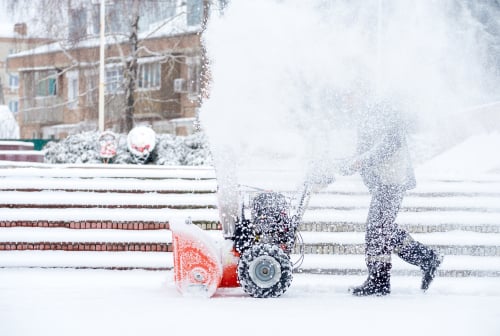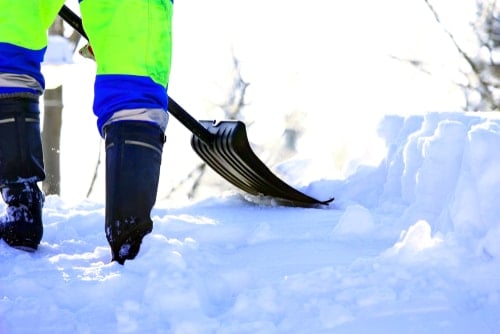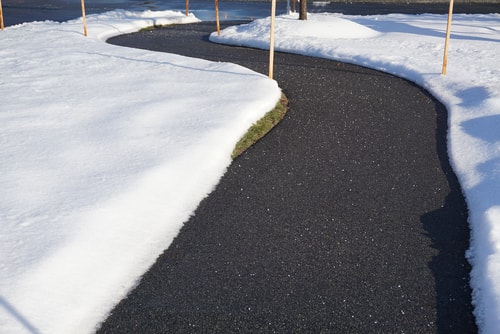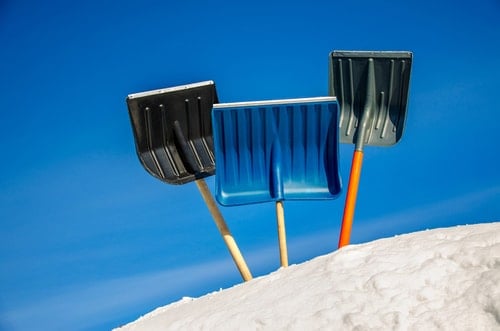
If you own a rental property, waiting for the first flakes to fall is not the time to plan for snow removal. Instead, a careful definition of landlord-tenant responsibilities will save a ton of headaches once severe weather does roll in. Many tenants and landlords question who is responsible for snow or ice removal. So, continue reading below as we uncover the breakdown of landlord-tenant responsibilities and how to prepare for the Winter season effectively.
Understanding Landlord-Tenant Responsibilities for Snow Removal
No one looks forward to getting out there in the cold to shovel a driveway or sidewalk. However, it is a necessary part of rental property maintenance throughout the winter months. In some cases, local jurisdictions also have their own rules regarding deicing and clearing pathways that landlords must be aware of. So, let’s take a look at the breakdown of landlord-tenant responsibilities below.
Removing Snow is a Single-Family Rental
For single-family homes, snow removal responsibility typically falls to the tenant. That said, landlords must still follow up to ensure tenants are completing Winter tasks satisfactorily. It is important that pathways are both cleared and deiced. In turn, this helps to prevent the risk of slips and falls for both tenants and guests.
Note that some jurisdictions allow exceptions for elderly or disabled occupants. If a tenant is physically unable or the task is unsafe, some communities are lenient on snow removal compliance. Generally, the tenant may use the help of neighbors or local service to help comply with ordinances.
However, as a landlord, if you know the tenant will not adequately handle the Winter responsibilities, take action early. Setting up an agreement with a trusted neighbor or reputable snow removal company is an efficient way to ensure you are prepared before the first flake ever falls.

Multi-Family Property Snow Removal Responsibilities
When it comes to landlord-tenant responsibilities in multi-family, snow removal falls on the landlord. So, property owners must ensure pathways and parking areas are free of snow and ice per local ordinances. Therefore, to effectively meet these demands, hiring a quality vendor is key.
Set up a contract for snow removal as early as possible. Doing so will ensure the service is there when needed and property owners are not scrambling. Make sure to check online customer reviews and the company’s pricing policies before deciding which one to go with. Often, companies have policies that dictate how much snow must accumulate before they plow, salt, etc., which are important details for owners.
Tenant Incentives for Snow Removal
Another option available to multi-family owners is to contract with a tenant to remove snow. This option is one to consider carefully based on the needs of your property and confidence the tenant can fulfill the obligation. However, if the area to clear is minimal or requires shoveling, it is worth looking in to.
Generally, this contract would consist of an additional addendum to the lease outlining the landlord-tenant responsibilities. Additionally, many landlords offer an incentive for taking on the task, such as reduced rent during the Winter season. Regardless of which option you choose, always use written contracts to avoid any misunderstandings.
The Link Between Local Laws and Snow Removal
Snow is pretty, but it can cause so many safety concerns for landlords and the community. Slips and falls are a costly liability and account for millions of dollars in claims nationwide each year. The Snow and Ice Management Association reports that the average claim for snow- or ice-related injury is $33,000. That is a major liability for landlords and tenants as well.
Therefore, both parties need to understand the landlord-tenant responsibilities and expectations regarding Winter tasks thoroughly. As the landlord, make sure tenants are aware of the local or community ordinances. Let’s examine that further below.

Landlord-Tenant Responsibilities for Knowing Local Laws
Local jurisdictions and even HOAs play a key role in Winter maintenance requirements. So, failure to comply could result in hefty fines or city citations no landlord needs. Keep in mind that any public walkway or curbs must have adequate clearance per the Americans with Disabilities Act. Although ordinances may vary from location to location, take a look at some basics below:
- Time limits for removal based on accumulation levels
- Maintain a clear pathway of at least 36 inches wide per ADA rules
- Do not deposit excess snow onto the street, any public property, or curbs
- Requirements to use sand or salt to prevent slips and falls
- Removal of snow from around fire hydrants, benches, or public amenities on or near the property
- Height limitations on piled snowbanks
In particular, cities take these rules very seriously, and property owners can face fines from $50 to hundreds of dollars for non-compliance. So, stay on top of this from the beginning to avoid any potential issues or infractions.
How to Define Landlord-Tenant Responsibilities
When it comes to landlord-tenant responsibilities, a property owner’s best tool is a solid rental property lease agreement. The lease outlines several key divisions in responsibility as well as sets expectations both parties agree to. Therefore, one aspect to address is the expectation surrounding snow removal.
So, when writing these lease provisions, proper working is crucial. Ensure that the rental agreement clearly outlines state and municipal laws regarding snow removal needs. Also, if the tenant is unfamiliar with the property, ensure they understand which areas they are responsible for maintaining. Additionally, property owners should have the rental agreement in its entirety reviewed by a capable attorney familiar with landlord-tenant responsibilities.
Sample Lease Clauses for Single and Multi-family Snow Removal
Courtesy of Lawinsider.com
Sample 1: “LESSOR will be responsible for the removal or other treatment of snow and ice on walkways, sidewalks, entryways, and parking areas. Notwithstanding the foregoing, however, LESSEE shall hold LESSOR harmless from any claims by LESSEE’s agents, representatives, employees or business invitees for damage or personal injury resulting in any way from snow or ice on any area serving the Building, provided LESSOR has performed this obligation absent LESSOR’s gross negligence or willful misconduct.”
Sample 2: “Landlord shall keep the parking lot and public sidewalks adjacent to the Building and any sidewalks or stairways leading from the public sidewalks to the Building free from snow and ice. Snowplowing, snow shoveling, and ice removal must be completed by 6:30 a.m. unless snow or wind conditions make this impossible. If the snow and ice removal is not completed by 6:30 a.m., Landlord will make every effort to complete the snow removal as soon as possible.”
Sample 3: “Landlord shall arrange for the removal of accumulations of snow and ice from the drives, parking areas, and walkways of the Property. If requested by Landlord, to facilitate snow removal work, Tenant and its employees and invitees shall park vehicles only in areas designated by Landlord.”
Tips for Safe Snow Removal at Rental Properties
When professional plowing is not an option, landlords and tenants can still take steps to remain safe this Winter. The use of a snowblower or shovel can get the job done but carries risk. Landlords in areas where large snowfall is common may even include a snowblower on the property for tenant use. However, ensure this equipment is included in the lease, and the tenant is familiar with its operation and maintenance needs before use.

If shoveling is the only option suited to your rental, check out these tips for added safety:
- Wear appropriately breathable and layered clothing that allows your body to regulate its temperature
- Use a lightweight shovel designed for snow removal
- Lift snow by bending at the knees and using your legs to lift – always protect your lower back
- If snow is deep, remove in layers and do not overload the shovel
- Deposit excess snow away from public areas and curbs
- Take frequent breaks as needed
Final Thoughts on Landlord-Tenant Responsibilities
Worrying about Winter maintenance is no fun for landlords, but creating a solid plan will save a lot of time and aggravation. Along with having a plan, setting clear expectations of landlord-tenant responsibilities under the lease is crucial for any rental relationship. Do you worry that your rental agreement is not up to snuff? Bay Property Management Group takes the guesswork out of rental management by providing owners with not only a legal lease but industry experts to manage every need.
Whether it’s leasing a vacant unit, responding to tenant calls, or scheduling necessary Winter maintenance, the dedicated property managers from Bay Property Management Group have you covered. Give us a call today to learn more about the benefits of hiring a full-service rental management company.
